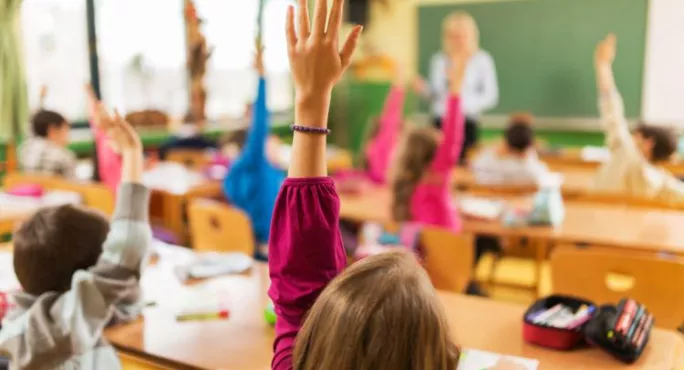- Home
- ‘These five ways to build confidence will get the best out of your students’
‘These five ways to build confidence will get the best out of your students’

Young people can achieve so much more when they feel confident. As teachers, we can play a monumental role in nurturing the self-esteem of our students.
There are, I believe, some sure-fire ways of doing this, so here are my five tips on how to get the best out of your students.
1. Create a secure environment for learning
If a student feels that at any moment a peer can ridicule them, this will obviously affect their willingness to express themselves in your lesson (for fear of getting picked on), as well as their wider confidence around school. It’s crucial that students feel safe in class, safe to express themselves and be themselves.
Of course, there are ways to do this, some of which I have referenced in a previous article. But more than just having strategies to implement, this is also about taking a completely non-partisan approach to the class. You can’t have favourites who you allow to dominate, while others are pushed to the back.
Equally, however much you want to “keep a class onside”, there are certain things you simply can’t let slide. Having the gumption to face up to conflict to establish a secure learning environment is crucial.
2. Praise and positive reinforcement
I remember when I first started teaching, I would write the word “praise” in capital letters on a Post-it note and stick it on the screen of my laptop as a constant reminder to encourage pupils.
It’s often something I would overlook in the heat of powering through a lesson plan to actually stop and acknowledge individual students, especially during the early part of my career.
Yes, it’s important not to offer faint praise, but if someone answers a question, completes a task or even comes into the room in the right manner, a quiet and heartfelt “thank you” or “well done” can go a long way.
I recall that I once observed a secondary school MFL teacher who had a “star chart” on her wall and a box of “star tokens”. She would hand out these stars on a regular basis then add up the number of stars each student had on a wall chart, which would equate to merits.
I suppose it was a non-tech version of Dojo points, a system used more extensively in primary schools. But the bottom line is, some praise and reward systems are very powerful in engaging otherwise disengaged students, providing an easy and effective way to build positive relationships with students.
3. Set tasks that are initially achievable
A lot has been written in education about “challenge” of late. As much as I absolutely agree that it is vital to push students academically, it’s my view that it’s also beneficial to offer students an opportunity to “get going” and, subsequently, a chance for you as teacher to build pupil confidence and self-esteem.
Sometimes setting tasks that are achieveable for students is one great way of doing this. The feeling of “getting something right” for a student, who rarely feels they do this, can be transformative in the short term.
4. Providing opportunities for independence
If the culture in a classroom is one in which students either rarely get things wrong, because answers are given, or where the teacher provides the answer too quickly whenever a student is stuck, then massive possibilities for confidence building are potentially missed.
By giving students the chance (at times) to learn for themselves, we can empower them and boost their self-esteem.
The best practice I have seen in this area is to have a “before you ask the teacher” poster displayed around the classroom with a set of rituals that each student needs to go through before engaging with the teacher. The 3B4ME poster is just one example:
- Brain - Think again about the task/question set
- Book - Look in the textbook or exercise book and re-check any example given
- Buddy - Ask a peer or consult a lead learner
- Boss - Ask the teacher for assistance
Setting smart lesson success criteria is also important. By ensuring students know what they have achieved and when, we give them a regular commentary on their own success.
5. Abandon all put-downs
“That’s a surprise coming from someone who…”
“I’ve never met anyone as ------- as you.”
“Surely you’re not going to break the habit of a lifetime and answer a question.”
Most teachers worth their salt understand that put-downs don’t produce results. However, on rare occasions, in the heat of the moment, I’ve seen teachers revert to them.
Unless you know a student really well, it’s best to avoid saying anything, even in jest, that might cause a feeling of alienation. Appearances can be deceptive; an apparently confident student who you think you know extremely well can have deep insecurities about particular issues that are completely hidden from all. One slapdash remark in haste can be remembered for a long, long time.
Thomas Rogers is a teacher who runs rogershistory.com and tweets at @RogersHistory
For more columns by Tom, view his back catalogue.
Want to keep up with the latest education news and opinion? Follow TES on Twitter and like TES on Facebook
Keep reading for just £1 per month
You've reached your limit of free articles this month. Subscribe for £1 per month for three months and get:
- Unlimited access to all Tes magazine content
- Exclusive subscriber-only stories
- Award-winning email newsletters



